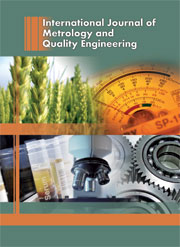Article contents
The yield estimation of semiconductor products based ontruncated samples
Published online by Cambridge University Press: 06 March 2014
Abstract
Product yield reflects the potential product quality and reliability, which means thathigh yield corresponds to good quality and high reliability. Yet consumers usuallycouldn’t know the actual yield of the products they purchase. Generally, the products thatconsumers get from suppliers are all eligible. Since the quality characteristic of theeligible products is covered by the specifications, then the observations of qualitycharacteristic follow truncated normal distribution. In the light of maximum likelihoodestimation, this paper proposes an algorithm for calculating the parameters of fullGaussian distribution before truncation based on truncated data and estimating productyield. The confidence interval of the yield result is derived, and the effect of samplesize on the precision of the calculation result is also analyzed. Finally, theeffectiveness of this algorithm is verified by an actual instance.
Keywords
- Type
- Research Article
- Information
- International Journal of Metrology and Quality Engineering , Volume 4 , Issue 3 , 2013 , pp. 215 - 220
- Copyright
- © EDP Sciences 2014
References
- 4
- Cited by


